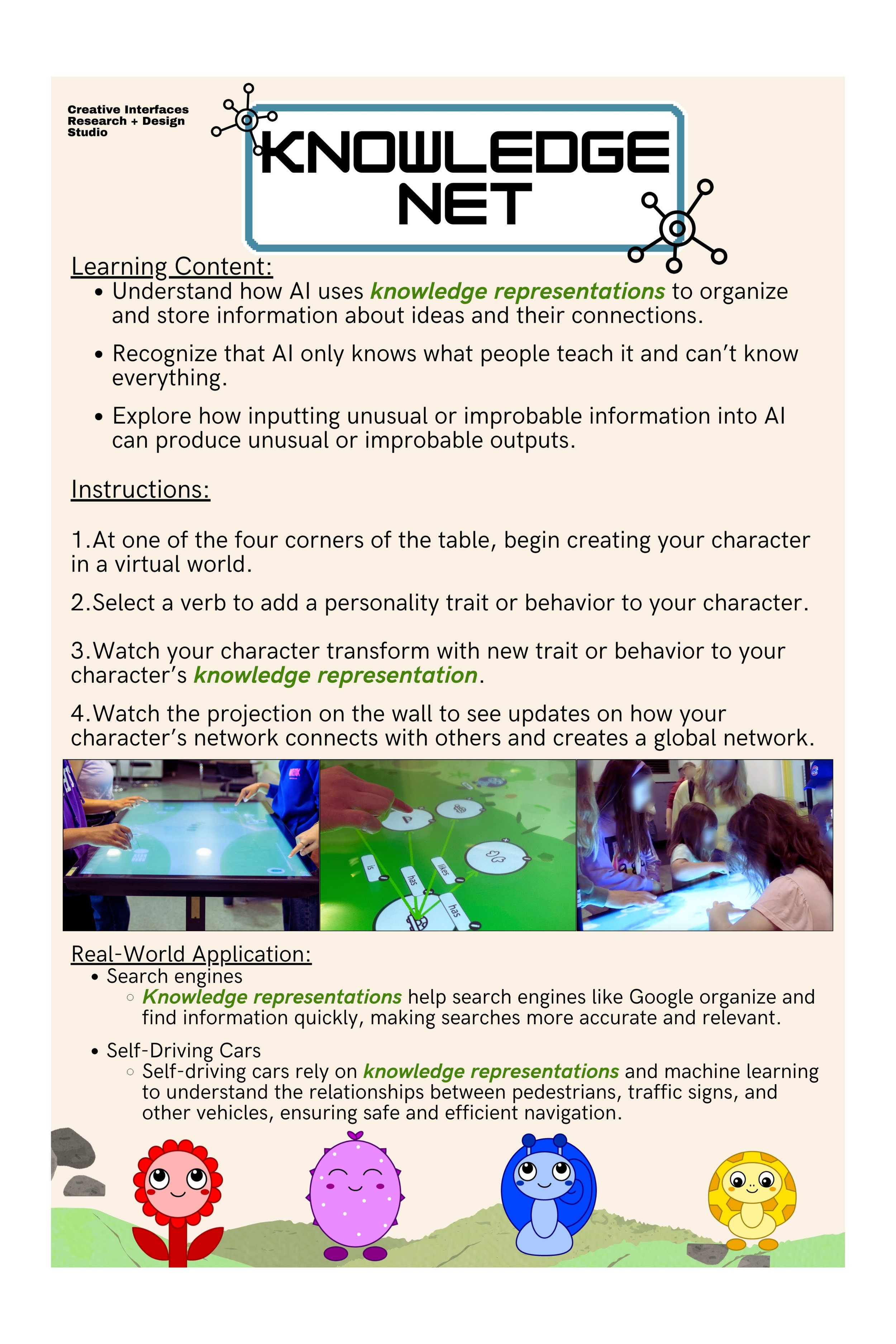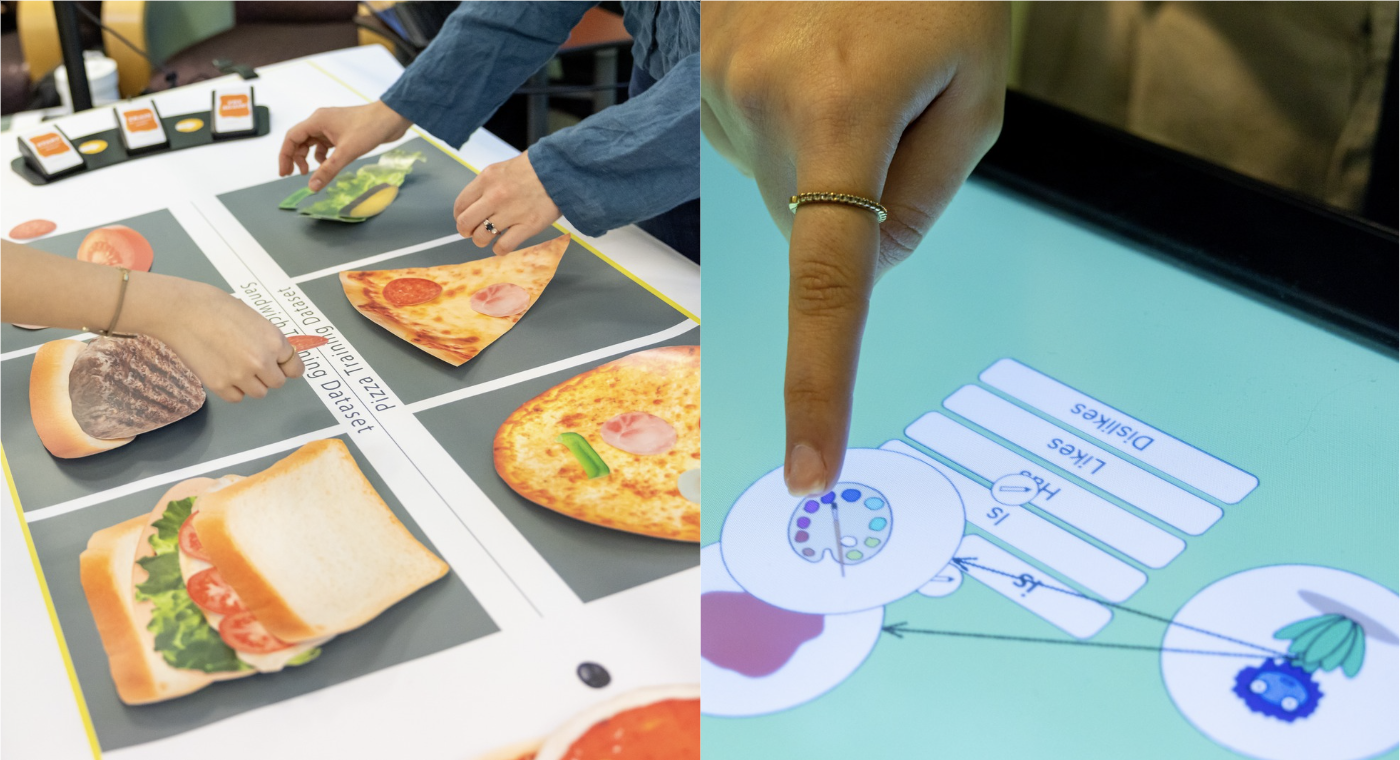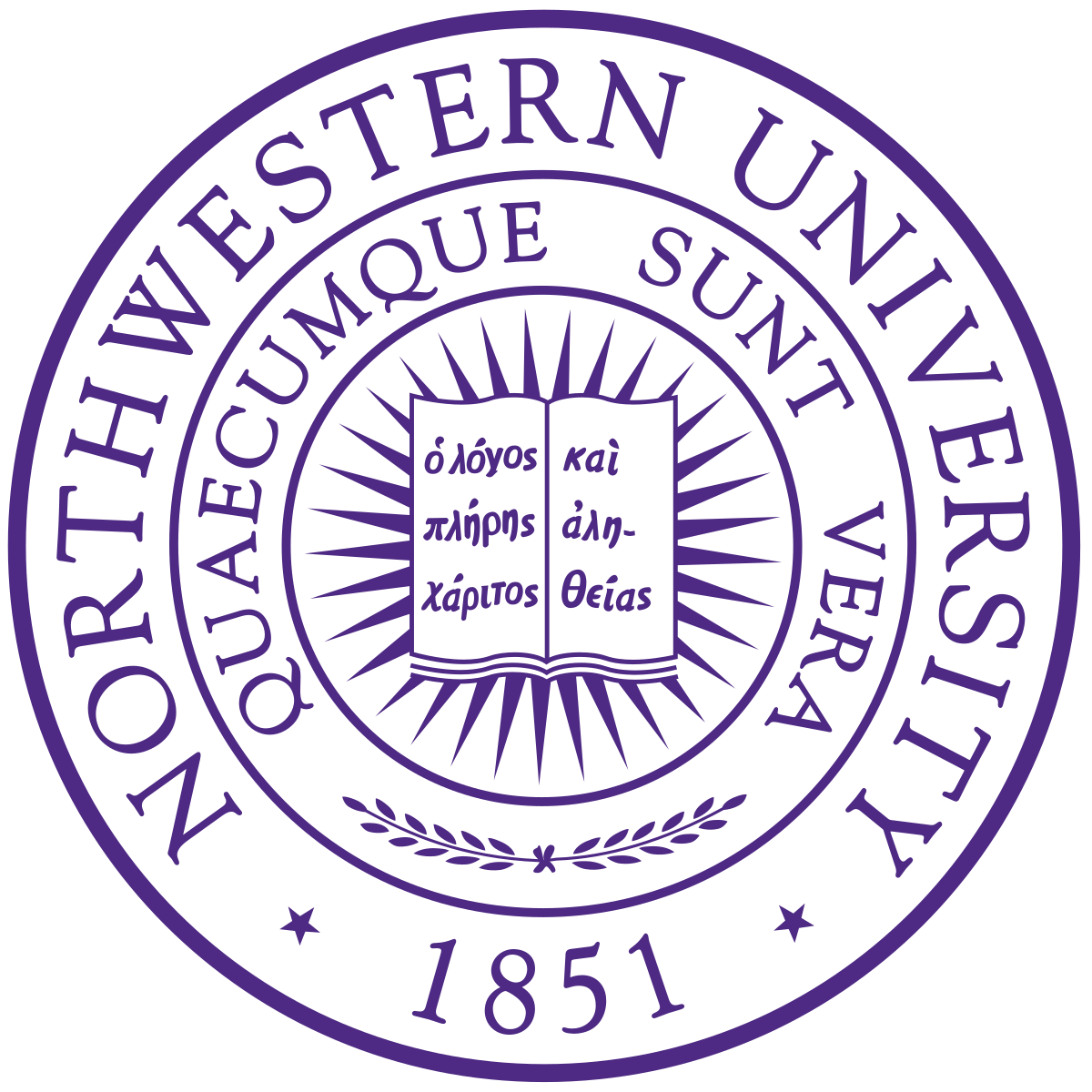DataBites and Knowledge Net
Investigating how informal interactions with AI-focused museum exhibits affects participants’ interest in and understanding of AI.
DataBites – hands-on activity about AI decision-making using patterns.
Knowledge Net – introduces semantic networks and AI organization of ideas.
Project Overview
👫 Who?
-
Designed for middle school students visiting a museum.
- Assuming little to no knowledge on technical concepts.
- Collaboratively designed by undergraduate, graduate, and PhD researchers at Northwestern University.
💡 What?
-
Two interactive prototypes:
- DataBites: Allows visitors to create datasets, teaching them how AI uses patterns to make decisions.
- Knowledge Net: Introduces the concept of semantic networks, visualizing how AI systems connect and organize information.
-
I led the signage and content design, crafting clear, engaging, and accessible messaging to guide visitor understanding and support the overall learning goals of the exhibits. This involves designing:
- Informational posters
- Bubble prompts to encourage engagement and discussion
Informational posters

Activity Bubble Prompt Example:
Bubble prompts

Discussion Bubble Prompt Example:
🕰 When?
January 2024
Joined the Creative Interfaces Research and Design Studio
June 2024
First pop-up installation at MSI
May 2025
Completed second interation of the exhibits
Ongoing
User testing & feedback loops
📍 Where?
- Designed at Northwestern University.
- Intended for exhibit at the Museum of Science and Industry (Chicago).
- Tested both on campus and at the museum.
❓ Why?
- To demystify AI concepts for a general audience.
- To foster critical thinking about how AI systems work — and don’t work — in real-world contexts.
- To create inclusive and engaging STEM education experiences for all types of learners.
Learning Takeaways
-
I learned how to design content that breaks down complex AI ideas into engaging, age-appropriate experiences for diverse learners.
-
I discovered the value of speaking up and sharing my perspective, even as a junior team member without a traditional tech background.
-
I developed the skill of prioritizing feedback, learning that thoughtful revisions matter more than trying to incorporate every suggestion.






